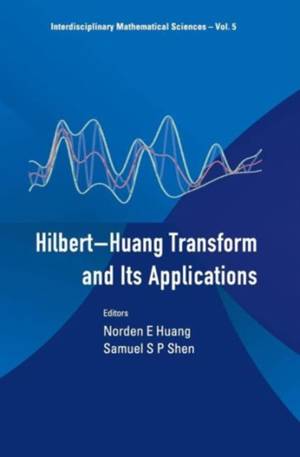
- Afhalen na 1 uur in een winkel met voorraad
- Gratis thuislevering in België vanaf € 30
- Ruim aanbod met 7 miljoen producten
- Afhalen na 1 uur in een winkel met voorraad
- Gratis thuislevering in België vanaf € 30
- Ruim aanbod met 7 miljoen producten
Zoeken
Hilbert-Huang Transform & Its App...(V5)
€ 323,95
+ 647 punten
Omschrijving
The Hilbert-Huang Transform (HHT) represents a desperate attempt to break the suffocating hold on the field of data analysis by the twin assumptions of linearity and stationarity. Unlike spectrograms, wavelet analysis, or the Wigner-Ville Distribution, HHT is truly a time-frequency analysis, but it does not require an a priori functional basis and, therefore, the convolution computation of frequency. The method provides a magnifying glass to examine the data, and also offers a different view of data from nonlinear processes, with the results no longer shackled by spurious harmonics -- the artifacts of imposing a linearity property on a nonlinear system or of limiting by the uncertainty principle, and a consequence of Fourier transform pairs in data analysis. This is the first HHT book containing papers covering a wide variety of interests. The chapters are divided into mathematical aspects and applications, with the applications further grouped into geophysics, structural safety and visualization.
Specificaties
Betrokkenen
- Uitgeverij:
Inhoud
- Aantal bladzijden:
- 324
- Taal:
- Engels
- Reeks:
- Reeksnummer:
- nr. 5
Eigenschappen
- Productcode (EAN):
- 9789812563767
- Verschijningsdatum:
- 21/09/2005
- Uitvoering:
- Hardcover
- Formaat:
- Genaaid
- Afmetingen:
- 172 mm x 255 mm
- Gewicht:
- 712 g

Alleen bij Standaard Boekhandel
+ 647 punten op je klantenkaart van Standaard Boekhandel
Beoordelingen
We publiceren alleen reviews die voldoen aan de voorwaarden voor reviews. Bekijk onze voorwaarden voor reviews.










